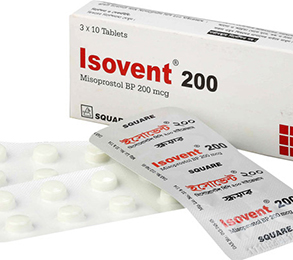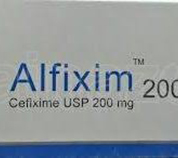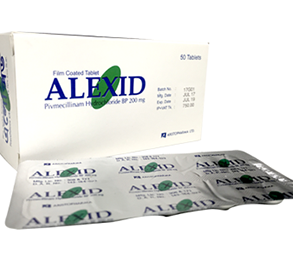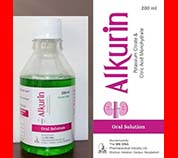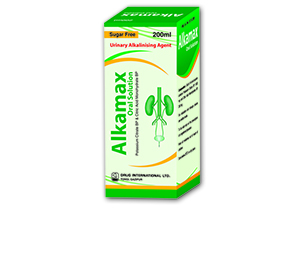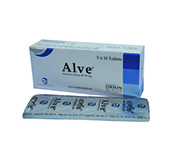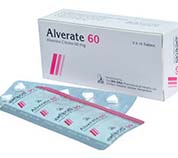Misopa Tablet 200 mcg 1 Pcs
Alternative products
Misoprostol
Indications
Misoprostol is indicated for-
- Prophylaxis of gastric and duodenal ulceration in NSAID users at high risk of complications from gastric ulcer e.g. the elderly, patients with concomitant debilitating disease and patients with a history of ulcer.
- Healing of established NSAID- induced gastric and duodenal damage.
- Healing of gastric and duodenal ulcers in the absence of NSAID therapy.
- Induction of labor.
- Prevention and treatment of postpartum hemorrhage.
Pharmacology
Misoprostol is extensively absorbed, and undergoes rapid de-esterification to its free acid, which is responsible for its clinical activity and, unlike the parent compound, is detectable in plasma. Maximum plasma concentrations of Misoprostol acid are diminished when the dose is taken with food and total availability of Misoprostol acid is reduced by use of concomitant antacid. Misoprostol has both antisecretory (inhibiting gastric acid secretion) and (in animals) mucosal protective properties. NSAIDs inhibit prostaglandin synthesis, and a deficiency of prostaglandins within the gastric mucosa may lead to diminishing bicarbonate and mucus secretion and may contribute to the mucosal damage caused by these agents. Misoprostol can increase bicarbonate and mucus production, but in man this has been shown at doses 200 meg and above that are also antisecretory. It is therefore not possible to tell whether the ability of Misoprostol to reduce the risk of gastric ulcer is the result of its antisecretory effect, its mucosal protective effect, or both.
Dosage & Administration
Benign gastric and duodenal ulceration and NSAID associated ulceration: 800 meg daily (in 2-4 divided doses) with breakfast or main meals and at bedtime; treatment should be continued for at least 4 weeks and may be continued for up to 8 weeks if required.
Prophylaxis of NSAID-induced gastric and duodenal ulcer: 200 meg 2-4 times daily taken with NSAID. If this dose cannot be tolerated, a dose of 100 meg can be used. Misoprostol should be taken for the duration of NSAID therapy as prescribed by the physician.
Induction of labor: Place 25 meg in the posterior fornix of the vagina. Repeat after every 6 hours if necessary until the maximum dosage of 200 meg total misoprostol is reached. Fetal heart rate and uterus contractions should be monitored. Alternatively, 100 meg taken orally. If cervical ripening or active labor does not occur, repeated dose of 100-200 meg of oral misoprostol is given every 4 hourly until labor is established (as evidenced by a Bishop score of 7 or more). Maximum number of dose is 6. Maternal vital signs, fetal heart rate and contractions should be monitored. Oxytocin can be started 4 hours after last dose of misoprostol. Physician should be notified for signs of fetal distress or tetanic uterine contractions. Oral misoprostol therapy should be monitored by Physician.
Prevention of postpartum hemorrhage: 600 meg orally immediately following delivery.
Treatment of postpartum hemorrhage: 600 meg orally or 1000 meg per rectally.
* চিকিৎসকের পরামর্শ মোতাবেক ঔষধ সেবন করুন'
Interaction
There is no evidence of clinically significant interaction between Misoprostol and cardiac, pulmonary, CNS drugs and NSAID's. The bioavailability of Misoprostol is decreased with high doses of antacid.
Contraindications
Misoprostol is contraindicated to anyone with a history of allergy to prostaglandins and it is also contraindicated in pregnancy.
Side Effects
Generally, Misoprostol is well tolerated. The most frequent adverse effects associated with Misoprostol therapy involve the GI tract such as diarrhea, abdominal pain, dyspepsia, flatulence, nausea, vomiting, rashes and dizziness. The incidence of diarrhea may be minimized by administering the drug after meal and at bedtime and by avoiding concomitant administration with a magnesium-containing or other laxative antacid.
Pregnancy & Lactation
Because of the abortifacient property of the Misoprostol component, it is contraindicated in women who are pregnant. It should not be used in women of childbearing potential unless the patient requires nonsteroidal anti-inflammatory drug (NSAID) therapy and is at high risk of developing gastric or duodenal ulceration or for developing complications from gastric or duodenal ulcers associated with the use of the NSAID. In such patients, it may be prescribed if the patient:
- has had a negative serum pregnancy test within 2 weeks prior to beginning therapy.
- is capable of complying with effective contraceptive measures.
- has received both oral and written warnings of the hazards of Misoprostol, the risk of possible contraception failure, and the danger to other women of childbearing potential should the drug be taken by mistake.
- will begin it only on the second or third day of the next normal menstrual period.
Excretion of the active metabolite (Misoprostol acid) into milk is possible but has not been studied. Because of the potential for serious adverse reactions in nursing infants, it is not recommended for use by nursing mothers.
Precautions & Warnings
In case of prevention and treatment of NSAID induced gastric and duodenal ulcer: Misoprostol is contraindicated in women who are pregnant, and should not be used in women of child bearing potential unless the patient requires NSAID therapy. Women of child bearing potential should be told that they must not be pregnant when Misoprostol therapy is initiated and they must use an effective contraception method while taking misoprostol.
In case of induction of labor: The pregnancy should have completed 38 weeks gestation by reliable dating, or lung maturity as evidenced by a L/S >2.0 or a positive phosphotidyl glycerol test, or completed 36 weeks gestation with a maternal or fetal medical indication for induction of labor. Induction of labor is contraindicated in acute fetal distress, abruptio placenta, placenta previa or unexplained vaginal bleeding. The fetus should be in vertex presentation.
Use in Special Populations
Use in children: Safety and effectiveness of Misoprostol in children below the age of 18 years have not been established.
Overdose Effects
The toxic dose of Misoprostol in human has not been determined. Clinical signs that may indicate an overdose are a sedation, tremor, convulsions, dyspnea, abdominal pain, diarrhea and fever. Symptoms should be treated with supportive therapy.
Therapeutic Class
Drugs acting on the Uterus, Prostaglandin analogues
Storage Conditions
Store in a cool and dry place, protected from light and moisture. Keep out of the reach of the children.
- Type Tablet
- Tag
- Morbi leo risus
- Porta ac consectetur ac
- Vestibulum at eros


